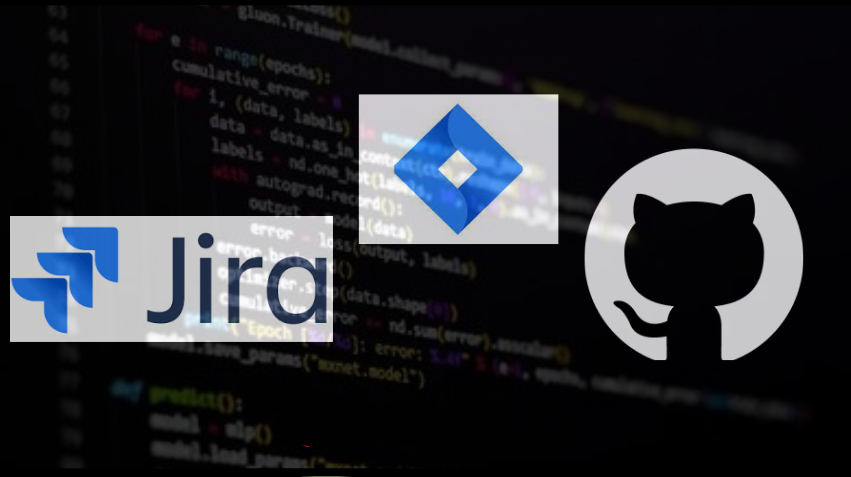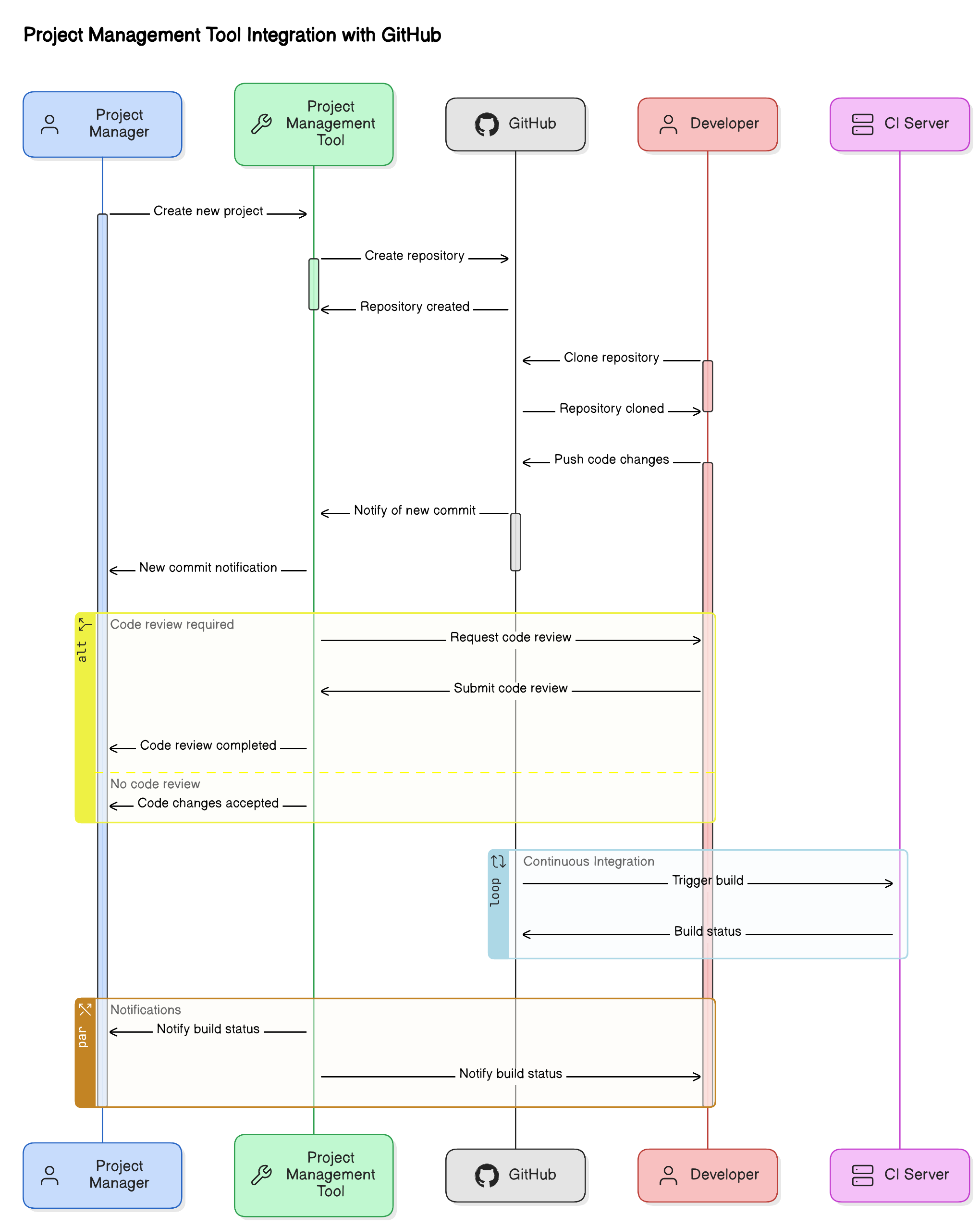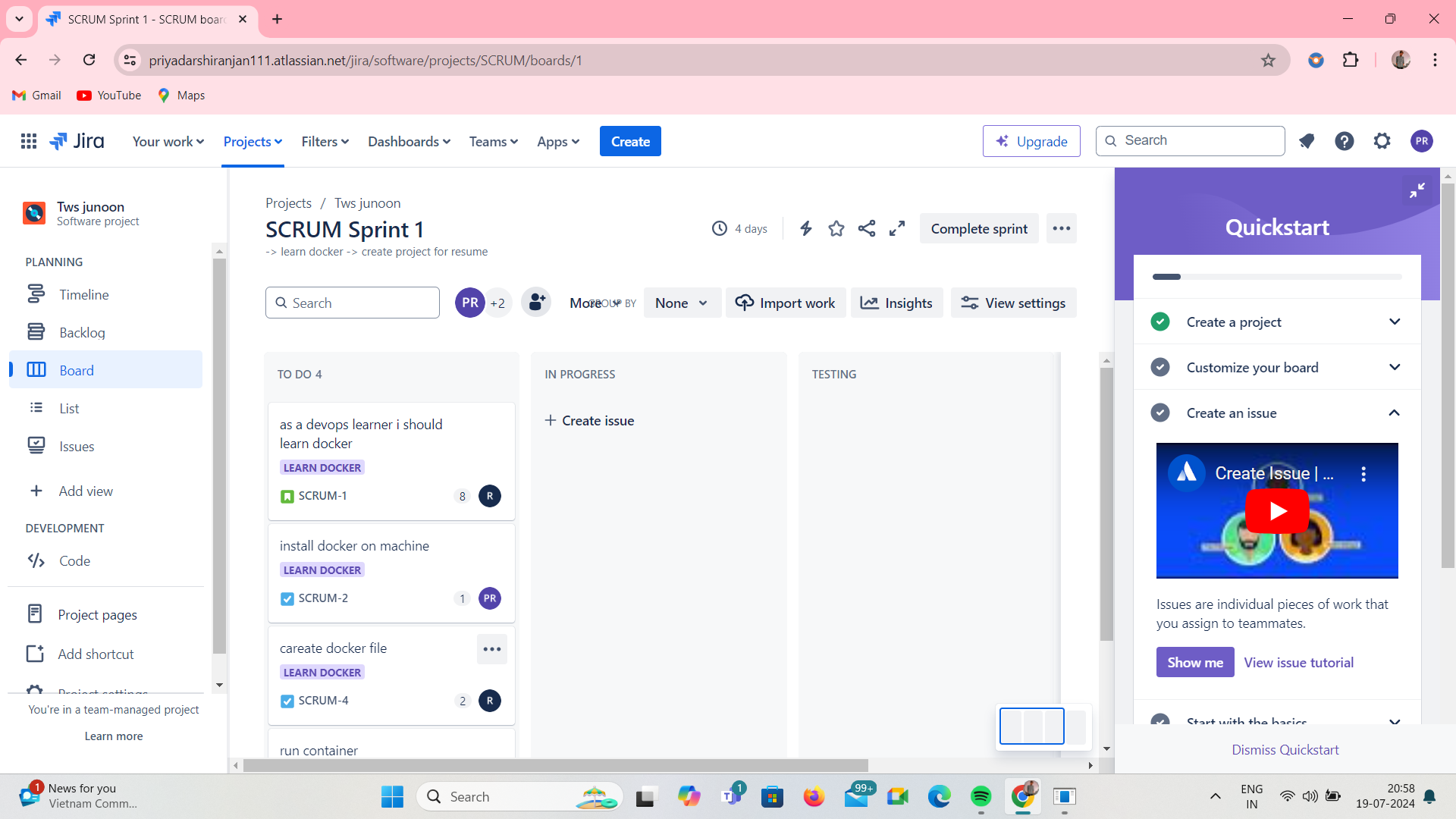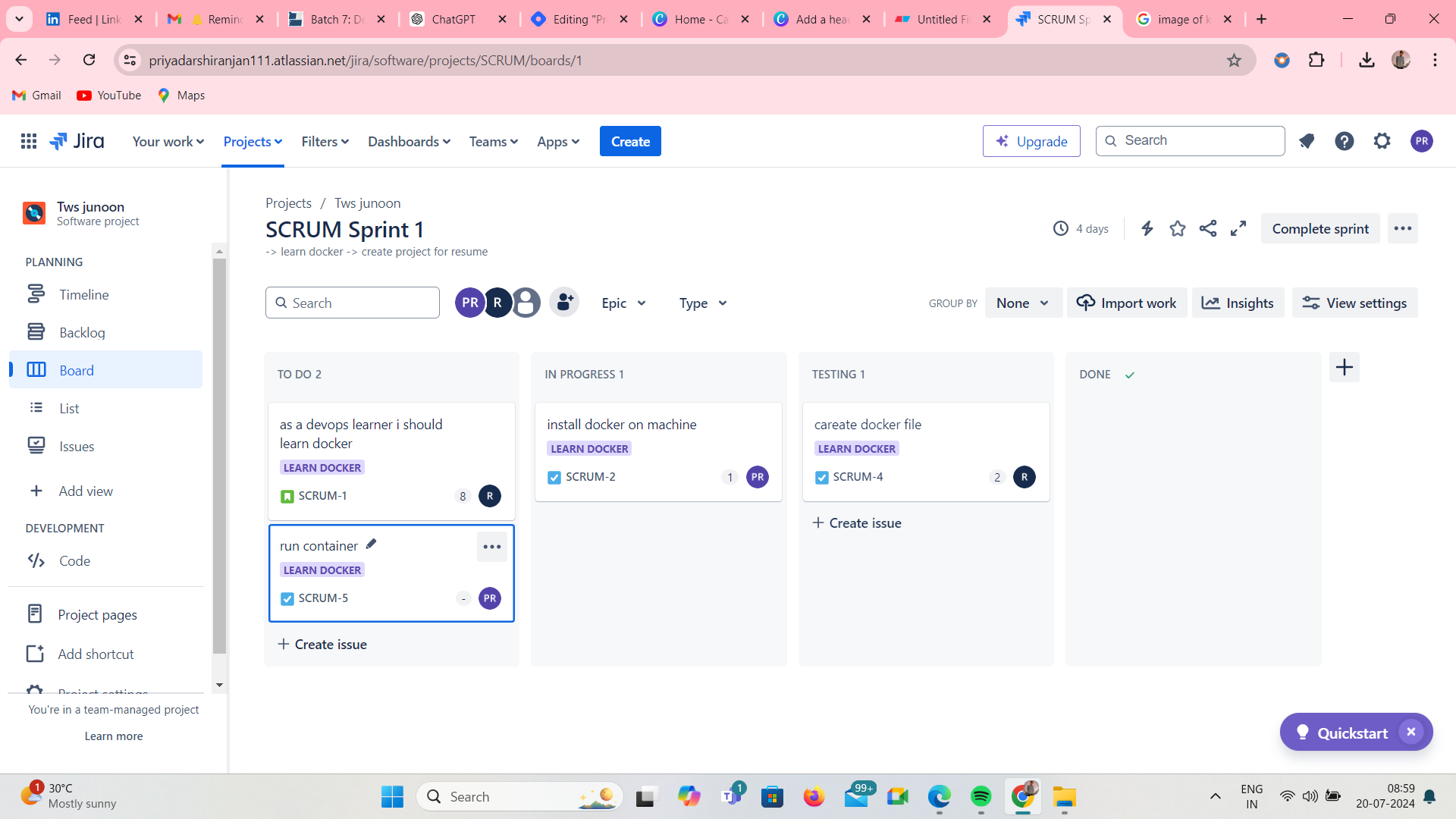Project Management Tool Integration with GitHub
 priyadarshi ranjan
priyadarshi ranjan
Introduction

Managing projects efficiently is crucial for any team, especially in the fast-paced world of software development. One of the best tools for this purpose is Jira, developed by Atlassian. Jira is like the central command center for your projects, helping keep everything organized and ensuring effective team communication. Whether you’re a small team working on a simple app or a large company managing multiple projects, Jira can scale to meet your needs.
What is Jira?

Jira is a powerful software tool used mainly for three things:
Project Management
Issue Tracking
Agile Software Development
Key Features of Jira

Customizable Workflows
Workflows in Jira define how tasks move from start to finish. You can customize these workflows to fit your team's needs. For example, a workflow for fixing a bug might include the following stages:
To Do
In Progress
In Review
Done
Detailed Reporting
Jira provides various reports to help you understand how your project is progressing. For example, you can see how many tasks are completed, how many are still in progress, and how many are yet to be started. This helps in planning and improving future projects.
Robust Integration Options
Jira can connect with many other tools your team might be using. For example, it integrates with GitHub (a code hosting platform) so that code changes can be linked to tasks in Jira. It also integrates with Slack (a communication tool) to get updates about your project directly in your chat.
Story vs. Epic in Jira
In Jira, both Stories and Epics are used to organize work, but they serve different purposes and scopes.
Story
A Story represents a single piece of work that needs to be completed within a sprint. It's usually a smaller task or requirement that a team can accomplish in a short time frame. Stories often follow a user-focused format like "As a user, I want to be able to log in so that I can access my account."
Epic
An Epic is a larger body of work that can be broken down into multiple stories. Epics often span multiple sprints and are used to manage more complex projects or features that require substantial effort and time to complete. For example, an epic might be "Implement user authentication system," which would then be broken down into stories like "Create login page," "Set up database for user credentials," and "Implement password reset feature."
Sprint
A sprint is a time-boxed period, typically 1-4 weeks, during which a specific set of work must be completed and made ready for review. Sprints help teams break down their work into manageable chunks and deliver increments of value regularly.
Sprint Process:
Sprint Planning: Define what can be delivered in the sprint and how that work will be achieved.
Daily Standups: Short meetings to discuss progress and obstacles.
Sprint Review: At the end of the sprint, review what was accomplished.
Sprint Retrospective: Reflect on the sprint to identify improvements.
Velocity Chart
A velocity chart tracks the amount of work a team completes during each sprint. This helps predict how much work a team can realistically achieve in future sprints. It is displayed as a bar chart showing story points completed per sprint.
Story Points
Story points are units of measure for expressing the overall effort required to fully implement a product backlog item or any other piece of work. This helps estimate the complexity, effort, and time required to complete a story. Teams often use a common scale like the Fibonacci sequence (1, 2, 3, 5, 8, 13, etc.) for assigning points.
Dashboards and Gadgets
Jira's Dashboards provide a customizable interface to display key project information using various gadgets. Dashboards help in visualizing data and tracking progress at a glance. Gadgets include:
Issue Statistics: Show statistics on issue types, priorities, or custom fields.
Sprint Burndown: Visualize the progress of a sprint.
Pie Charts: Display issue distribution by status, assignee, or other fields.
Permissions and Security
Jira provides robust permissions and security settings to control access and ensure data integrity. Features include:
Project Roles: Define roles and assign permissions based on team members' responsibilities.
Issue Security: Set security levels to restrict access to specific issues.
Field-Level Security: Control visibility and editability of custom fields based on user roles.
Account Creation
Creating a Jira account is a straightforward process. Here’s a step-by-step guide to help you get started:
Step-by-Step Guide:
Sign Up for Jira
- Open your web browser and go to the Jira website: Jira Sign-Up
Create an Atlassian Account
Enter your email address and click on Sign up.
Follow the prompts to fill in your details and create your account.
Set Up Your Jira Site
Choose a name for your Jira site. This will be part of your site URL (e.g., https://yoursitename.atlassian.net) (https://priyadarshiranjan111.atlassian.net/).
Enter a unique name and click on Continue.
Initial Configuration
Choose a Template
- Jira will prompt you to choose a template based on your project type. For software development, you can choose between Scrum or Kanban. Select your preferred template and click on Use template.
Create Your First Project
Enter a name for your project and optionally a key (a unique identifier for your project). Click on Create.
For example, if you’re developing a new web app called Wanderlust, you can create a project in Jira called "Wanderlust Deployment."
Explore Jira
- Take some time to explore the Jira interface. Familiarize yourself with the dashboard, backlog, boards, and other features. Use the QuickStart Panel for better step-by-step guidance.
Real-Life Example: Integrating Jira with GitHub
Step-by-Step Task Breakdown:
Set Up and Verify GitHub Repository
Task: Review existing code and Dockerfile.
Task: Validate Kubernetes YAML files.
Task: Set up GitHub Actions workflow.
Integrate Jira with GitHub
Task: Install GitHub for Jira app.
Task: Connect Jira to GitHub repository.
Task Workflow:
To Do:
- Tasks that need to be started.
In Progress:
- Tasks that are currently being worked on.
Review:
- Tasks that are completed and need review.
Done:
- Tasks that are completed and verified.
Example of Task Management:
Review Existing Code and Dockerfile
Description: Ensure the Dockerfile and application code are properly set up.
Assignee: [Team Member]
Validate Kubernetes YAML Files
Description: Review deployment.yaml and service.yaml for correctness.
Assignee: [Team Member]
Set Up GitHub Actions Workflow
Description: Create or verify the GitHub Actions workflow file for deployment.
Assignee: [Team Member]
Monitoring and Managing the Project:
Daily Standups: Regularly update the status of tasks.
Review Sessions: Regularly review tasks moved to the Review column.
Retrospectives: After project completion, review what went well and what could be improved.
By following this detailed plan, you ensure a structured approach to managing the deployment of the Wanderlust web app using Kubernetes, integrated with Jira and GitHub for effective project management and continuous deployment.
Conclusion
Jira, with its powerful features and robust integration options, becomes an invaluable tool for managing projects and tracking issues. By integrating Jira with GitHub, you can streamline your development process, ensure seamless collaboration, and keep your team aligned towards common goals. Whether you're a small startup or a large enterprise, Jira's flexibility and scalability make it the perfect fit for your project management needs.
Reference
For a visual guide, you can watch this YouTube video by Shubham Londhe Sir.
Connect and Follow Me on Socials
Subscribe to my newsletter
Read articles from priyadarshi ranjan directly inside your inbox. Subscribe to the newsletter, and don't miss out.
Written by

priyadarshi ranjan
priyadarshi ranjan
Greetings! 👋 I'm Priyadarshi Ranjan, a dedicated DevOps Engineer embarking on an enriching journey. Join me as I delve into the dynamic realms of cloud computing and DevOps through insightful blogs and updates. 🛠️ My focus? Harnessing AWS services, optimizing CI/CD pipelines, and mastering infrastructure as code. Whether you're peers, interns, or curious learners, let's thrive together in the vibrant DevOps ecosystem. 🌐 Connect with me for engaging discussions, shared insights, and mutual growth opportunities. Let's embrace the learning curve and excel in the dynamic realm of AWS and DevOps technology!